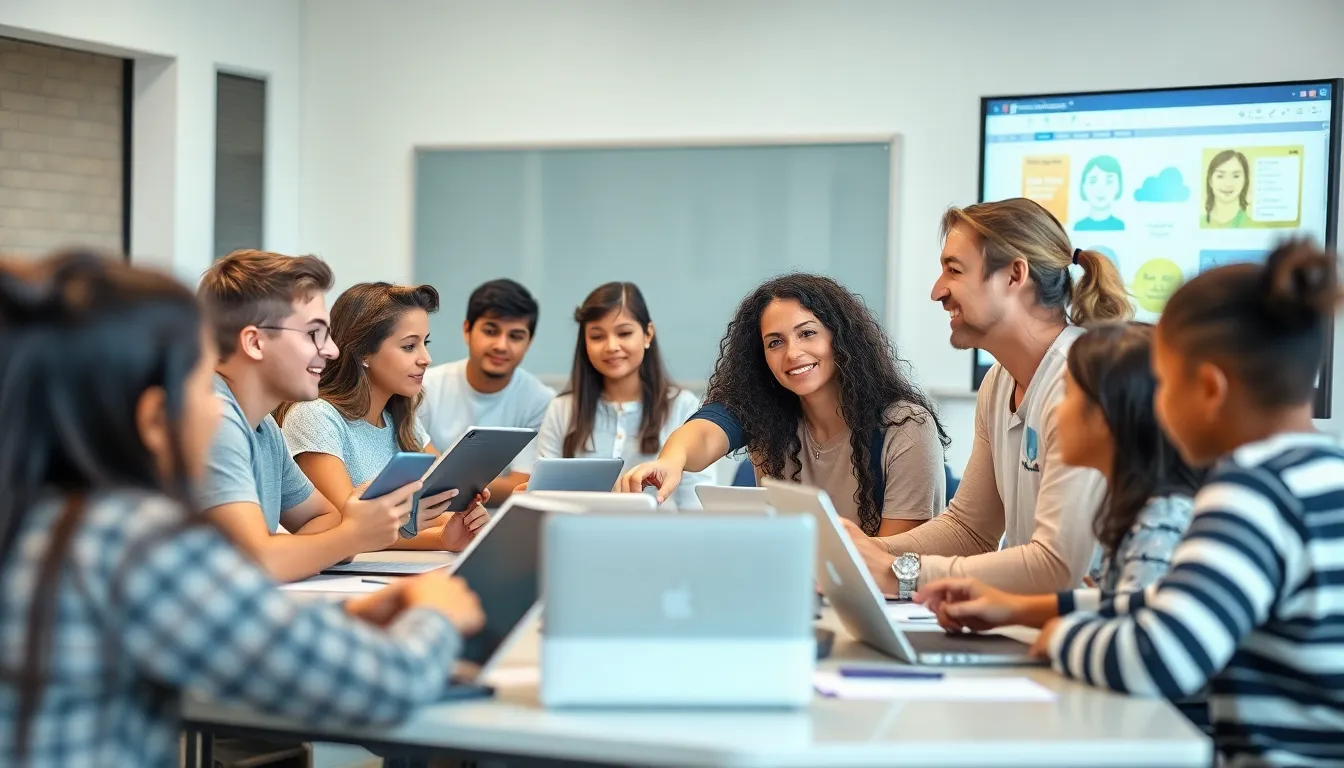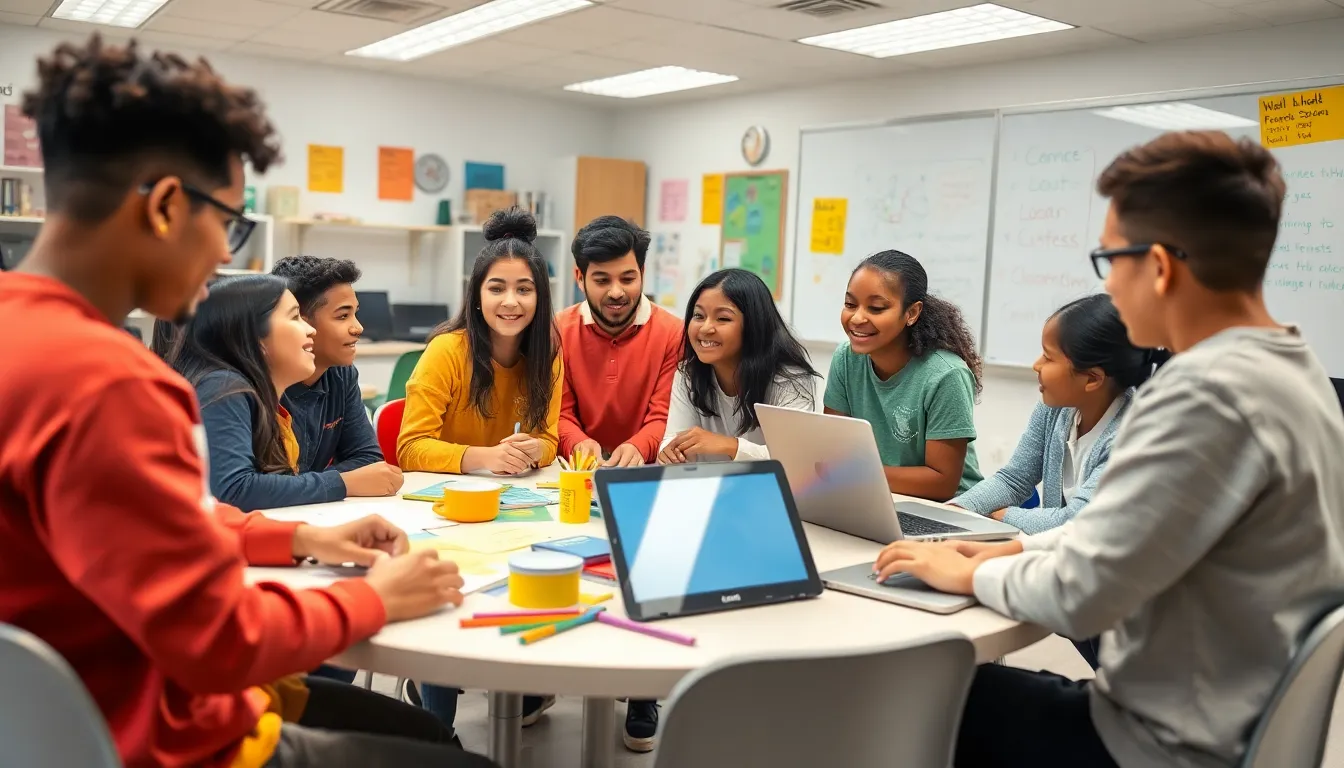In today’s fast-paced world, technology has transformed every aspect of life, and education is no exception. Classrooms are evolving into dynamic learning environments where digital tools enhance teaching and learning experiences. From interactive whiteboards to online resources, technology empowers educators and students alike, making learning more engaging and accessible.
As educational institutions embrace these advancements, they’re not just adapting to change but leading the way toward a more innovative future. Technology in education bridges gaps, fosters collaboration, and prepares students for a tech-driven job market. Understanding its impact is crucial for educators, parents, and policymakers aiming to harness its potential for better learning outcomes.
Table of Contents
ToggleOverview Of Technology In Education
Technology in education encompasses a broad range of digital tools and platforms that enhance teaching and learning. Educational institutions utilize software applications, online resources, and hardware to support diverse learning styles and needs. The integration of technology facilitates personalized learning experiences tailored to individual student preferences.
Classrooms increasingly incorporate interactive whiteboards, tablets, and laptops, transforming traditional teaching methods. Educators leverage Learning Management Systems (LMS) to deliver course content efficiently, monitor student progress, and provide feedback. These platforms enable a collaborative environment, encouraging peer interaction through discussion boards and group projects.
Online learning has become a mainstay in education. Asynchronous learning models allow students to access materials at their convenience, promoting self-paced study. Synchronous learning environments encourage real-time interaction, fostering community among learners regardless of geographical barriers.
Data analytics play a crucial role in technology’s impact on education. By analyzing student performance data, educators can identify areas needing improvement and adapt their teaching strategies accordingly. This data-driven approach leads to targeted interventions, improving overall effectiveness.
Incorporating technology also prepares students for a digital workforce. Skill development in areas such as coding, digital literacy, and online communication equips learners with essential competencies for future employment. Educational institutions emphasize these skills to align curricula with industry standards, ensuring students remain competitive in a tech-driven job market.
Benefits Of Technology In Education

Technology significantly enhances educational experiences, providing tools that support diverse learning styles and needs. Its integration helps foster an engaging and productive learning environment.
Enhanced Learning Experience
Enhanced learning experiences occur through personalized learning paths that technology facilitates. Adaptive learning software tailors content to individual student needs, allowing for targeted skill development. Interactive simulations and virtual labs provide practical experiences often unavailable in traditional classrooms. Additionally, multimedia resources, such as videos and podcasts, cater to various learning preferences, ensuring that all students grasp complex concepts effectively.
Increased Accessibility
Increased accessibility allows students from diverse backgrounds to engage with educational materials. Online courses and resources enable learners to access content anytime and anywhere, removing geographic barriers. Tools like text-to-speech software assist students with disabilities, facilitating equal opportunities for education. Furthermore, mobile technology empowers learners to use their devices for educational purposes, promoting continuous learning outside the classroom.
Improved Engagement
Improved engagement stems from interactive and immersive learning experiences. Gamification techniques, where educational content is presented in game-like formats, motivate students to participate actively. Collaborative platforms encourage teamwork and communication among peers, fostering a sense of community in learning. Real-time feedback mechanisms provide immediate insights into student performance, allowing for adjustments and improvements that maintain interest and motivation in the subject matter.
Challenges Of Implementing Technology
Implementing technology in education presents several challenges that institutions must address to maximize effectiveness. Two primary concerns include cost considerations and the need for training and support.
Cost Considerations
Budget constraints often hinder educational institutions from fully integrating technology. Expenses for purchasing hardware, software, and infrastructure can be substantial. Institutions may face additional costs related to ongoing maintenance and upgrades for these technological tools. For example, schools might allocate resources for licensing fees for educational software or subscriptions to online platforms. Limited funding can also affect the ability to provide students and teachers with adequate devices, which is crucial for successful technology adoption.
Training And Support
Training and support are essential components for successful technology implementation. Educators must receive proper training to effectively use new tools and integrate them into their teaching methods. Insufficient training can result in low adoption rates and hinder educational outcomes. Institutions also require ongoing technical support to resolve issues quickly and ensure smooth operation. Examples of support include IT help desks or regular workshops that focus on new technologies. Instituting a robust training program can lead to better utilization of technology, fostering confidence among educators and enhancing student learning experiences.
Future Trends In Educational Technology
The future of educational technology promises innovative solutions that further enhance engagement and accessibility in learning. Key advancements in artificial intelligence and immersive technologies like virtual and augmented reality are set to transform educational landscapes.
Artificial Intelligence And Learning
Artificial intelligence (AI) plays a transformative role in personalizing learning experiences. AI-powered tools analyze student data to deliver tailored educational content, adapting to individual learning speeds and styles. For instance, platforms like DreamBox Learning and Knewton provide customized math and reading programs, respectively. These systems identify knowledge gaps, enabling targeted interventions that optimize student performance.
Additionally, AI enhances administrative efficiency in educational institutions. It streamlines grading, automates administrative tasks, and facilitates communication between educators and students. Tools such as Grammarly and Turnitin assist in improving writing skills by offering real-time feedback. Incorporating AI-based chatbots into online learning environments also ensures that students receive immediate answers to their queries, fostering a more supportive learning atmosphere.
Virtual And Augmented Reality
Virtual reality (VR) and augmented reality (AR) offer immersive learning experiences that deepen understanding of complex subjects. VR creates realistic environments for simulations, allowing students to explore historical events, scientific phenomena, or intricate systems firsthand. For example, platforms like zSpace provide virtual labs in which students conduct science experiments without physical limitations.
AR complements real-world environments with digital overlays, enhancing interactivity. Applications like Merge Cube allow students to manipulate 3D objects in their physical space, facilitating hands-on learning in subjects like biology and astronomy. Schools increasingly incorporate these technologies into curricula, promoting engagement and retention through experiential learning.
These advancements not only enhance educational outcomes but also prepare students for future career opportunities in a technology-driven market.
Technology’s integration into education is reshaping how learning occurs. By embracing digital tools and innovative platforms, educators are creating more engaging and accessible experiences for students. This transformation not only enhances the learning process but also prepares students for the demands of a tech-driven future.
As educational institutions continue to adapt, they must address challenges such as funding and training to maximize the benefits of technology. The ongoing evolution of tools like AI and immersive technologies promises to further enrich educational landscapes. Ultimately, the commitment to leveraging technology in education will play a crucial role in fostering a generation of learners equipped with essential skills for success.




